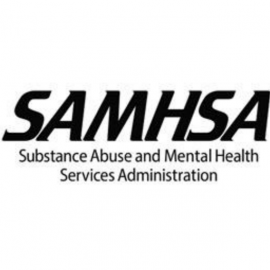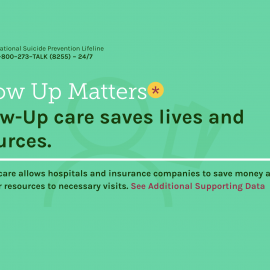Role of Crisis Services
Using Crisis Services to Augment Care
Prior to 2000, there were several hundred local crisis call centers across the country, underfunded, fragmented, and lacking in credibility with policymakers and funders. Staffed with dedicated volunteers, these poorly funded programs lacked the technology, data-tracking tools, and consistent protocols needed to effectively perform their work.
The nation’s approach to crisis call centers received a significant upgrade starting in 2004 with the creation of the National Suicide Prevention Lifeline and then in July 2022 with the launch of 988. Comprehensive crisis systems are necessary to prevent avoidable tragedies and to orchestrate effective care and 988 gives federal focus and funding to help to raise the bar on crisis system functioning and to strengthen the entire mental health system.
Providers of crisis care tighten the web of care by aiding individuals who are between episodes of care (e.g., transferring from clinic to clinic), levels of care (e.g., inpatient to outpatient), or appointments. They offer additional support to individuals 24/7/365.
Defining Crisis Services
In the field of suicide prevention, the term crisis services has often meant a hotline or helpline model of care, such as 988, counselors staffing phone lines or, increasingly, text or chat lines (including 988) that assist callers with a suicidal or behavioral health crisis. Organizations that provide support during crises are varied and can include:
- Mobile mental health crisis teams
- First responders
- Walk-in crisis clinics
- Hospital-based psychiatric emergency services
- Mental health respite services
- Peer-based crisis services
- Other programs designed to provide immediate assessment, crisis stabilization, and referral to an appropriate level of ongoing care
Incorporating Crisis Services
Providing a full range of crisis services can reduce involuntary hospitalizations and suicides when paired with mental health follow-up care. Communities should offer a full continuum of services designed to provide the right care at the right time and support an individual’s ability to cope with suicidal thoughts or feelings. This is clearly easier for larger communities with more resources to provide such care, however, there are things that under-resourced communities can do to increase the support that crisis services can provide. Page 35 of SAMHSA's National Guidelines for Behavioral Health Care has information to assist rural areas.
To incorporate the use of crisis services, health and behavioral health organizations should:
- Reach out to crisis organizations and develop collaborative relationships that can be formalized with agreements or subcontracts.
- Provide written information about available crisis services (including 988) to every individual at risk of suicide as part of a safety plan and at discharge from treatment
- Explain the purpose, utility, and services offered by the different crisis services to every individual in care and their family, both at the start of treatment, during times of crisis, and at discharge
- Consider formalizing a relationship between outpatient behavioral health providers and crisis organizations to communicate and collaborate on the care of individuals who are accessing crisis services between appointments. Formalized relationships can enable specific communication about the reasons and outcomes for individuals who access crisis services in these circumstances, and it can strength the entire care continuum
- Consider obtaining consent from individuals prior to their discharge from inpatient or emergency department care for a crisis center to provide follow-up support
You can review the 988 Suicide and Crisis Lifeline Suicide Safety Policy here.

